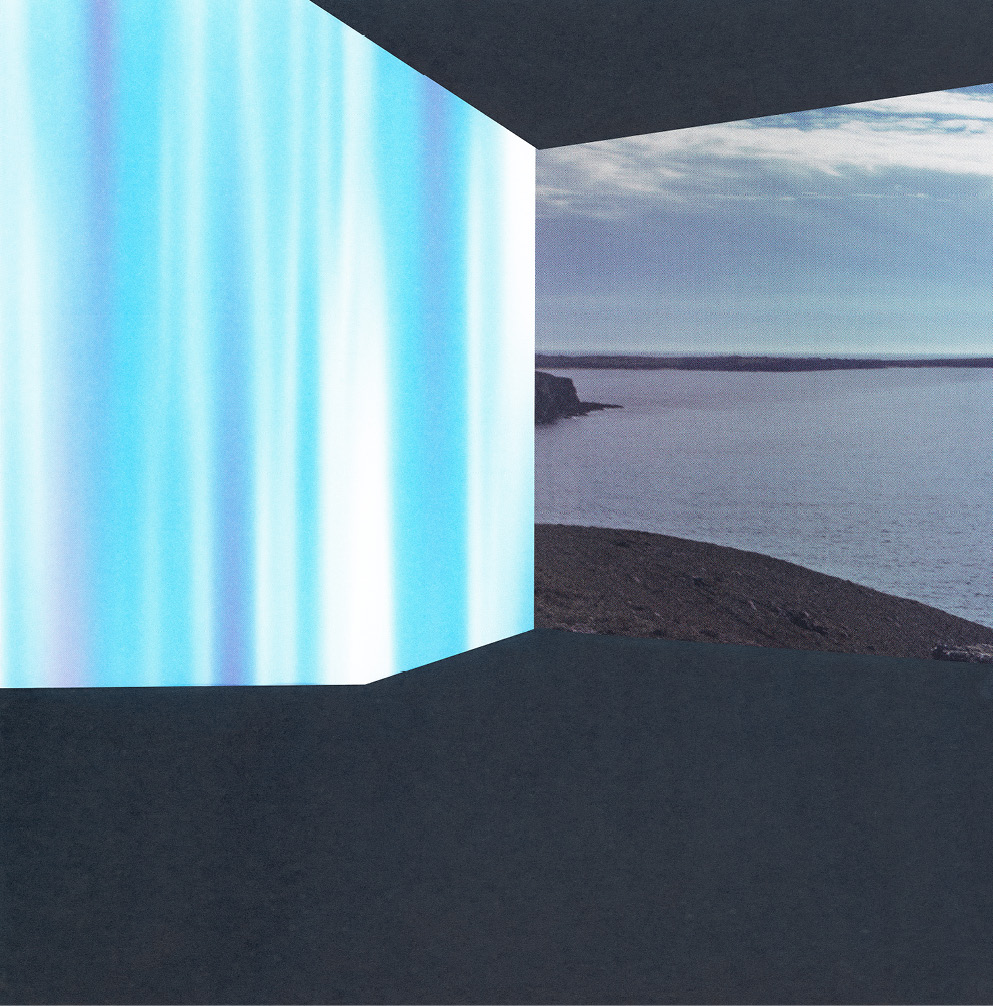A stunning expansion upon themes she explored in her last Los Angeles show, Vikky Alexander’s “Vertical Dreams” features four floor-to-ceiling photomurals turning the entire gallery into an immersive meta-collage that asks us to consider how we sanitize, prettify and neatly package nature for our own anthropocentric consumption. Its title connotes the installation’s overall tenor of aspiration and illusion while alluding to the towering format of each wall piece.
The Montreal-based artist’s 2014 Wilding Cran exhibition, “Theatergarden Bestiarium,” addressed tensions between feral creatures and human luxury via small collages portraying lone animals running wild, as though lost or confused, against incongruous backgrounds of depopulated venerable historic sites. More abstract and intricate, her new body of work elaborates similar nature-culture dichotomies on a much larger scale via life-size portrayals of spatially disjunctive architectural contrivances appearing to subsume or encapsulate wilderness beyond. Confrontationally dwarfing and surrounding gallery visitors, these giant collage-like murals force viewers to look up at them. Instead of passively peering at the beasts of the 2014 works, the viewers become like those animals, trapped in a baffling artificial setting of society’s creation.
Evoking simulative decor, dioramas, hunting blinds and visions from virtual reality, Alexander’s photomural scenes highlight the strange sterility of wilderness processed to suit human taste. Slick patterns, artificial ligneous veneers and digitally shaded expanses form the vapid boundaries of oddly shaped chambers. Window-like cutouts reveal distant glimpses of trees, mountains and water. These beautiful vistas are always indistinct, unattainable. One sees nature, but no way to get to it. Out of place in Frozen Wall (all works 2018), an ostentatious striated blue cube, appearing as a minimalistic sculpture from a cartoon world, inelegantly thwarts a dusky panoramic lake view.
Amid such clashing collaged abutments distorting perspective, a unique visual logic emerges between fragments that shouldn’t match but somehow do. Manmade textures and natural forms echo one another in surprising ways. Woodgrain striations resonate with zigzag zebra stripes in Zebra Skylight. Rosie Corner features a trellis of lifeless lumber whose wavy cut grain echoes the sinuous movement of tree trunks beyond: a living wood visible through dead wood slats. In Silver Floor, the pinnate venation of two broad leaves, which Alexander sourced from serving platter decorations, leads into fronds of royal palms enisled in a rectangle resembling a glass vitrine or giant computer screen.
Other technologic telltales signal that these scenes belong to a computerized world. Due to enlargement from smaller collages, dots become obvious as you approach, evoking alien textures such as reptile skin. Perceptible from a few feet away, subtle collage seams destroy each scene’s mirage-like plausibility.
Expanses of bare white wall, appearing as stark nothingness amid the photomurals, further render the actual space a seemingly disjunctive realm. Evoking synthetic portals to other sterile realms within the gallery, Alexander’s photomurals convey digital technology’s commercialistic pretensions of allowing you to be in myriad places at once without leaving your living room. Advanced technology might allow us to feel like the world is at our fingertips; but aren’t the notions that we can “have everything” and keep the natural environment around us under our thumbs without repercussion, just as illusory as ever?



